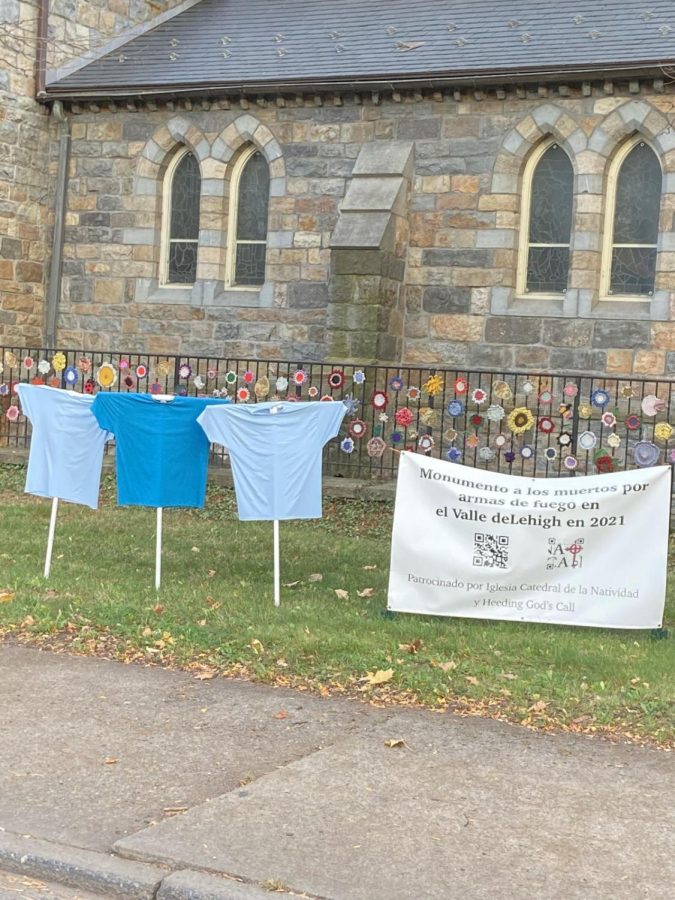Gun violence continues to plague U.S. schools, prompting community response
Gun violence plagues the safety of schools all around America.
As 2022 came to a close, it wrapped with the highest number of school shootings in one year. In response to this record high, protests for and against gun control broke out across the country this summer, attracting congressional attention.
According to data from Education Week, last year’s 51 shootings was the largest number of incidents they currently have on record. In addition to the physical harm caused by this issue, statistics support that student mental health is at risk. According to a study from Pew Research Center in 2018, 57% of teens ages 13-17 admit that they are worried about a possible shooting occurring at their school.
Following the outcries of injustice and negative social trends, the House of Representatives proposed a bill titled the “Protecting Our Kids Act.” The bill intends to curb instances of gun violence by making firearm trafficking a federal crime, keeping individuals under the age of 21 from purchasing weapons of war, and promoting the proper care of household firearms. The bill has yet to pass in the Senate.
The ramifications of this national issue were recently felt in the Lehigh Valley as similar protests erupted in Bethlehem. A March for Our Lives protest was held last summer in response to local school shootings. The protestors at the rally advocated for stricter gun control laws and were met with counter protestors that stood in support of gun ownership rights.
A memorial for victims of gun violence was also put up in the Lehigh Valley in the month of November 2022. The memorial featured the names of gun violence victims written on t-shirts and posted on crosses at the Iglesia Catedral de Navidad. The church worked with the organization Heeding Gods’ Call to End Gun Violence, to bring awareness to the American Catholic community about gun violence.
As a response to the mass school shootings in the last decade, American schools have implemented A.L.I.C.E. training. A.L.I.C.E. is a school safety procedure that shows students and staff methods to respond to active threats. Students at Southern Lehigh High School currently practice these drills annually to prepare for threats and build confidence about their ability to respond to dangerous situations.
“Back in middle school when I wasn’t really used to it. There was a lot of anxiety surrounding [the active shooter drills],” sophomore Wyatt Hartenstine said, “But then it became more of a common thing and each drill I got more used to it. And that shouldn’t be something that I get used to. That shouldn’t be something that we consider normal, a shooter drill. A shooter drill shouldn’t even exist in the first place.”
Despite students’ frustration to the normalcy of active shooter drills, they have become a routine part of American school children’s lives. Data from Everytown explains that 95% of public school districts practice active shooter drills.
Students of Southern Lehigh promote the need for change in both our school communities and on a national level in order to rectify this issue. Not only does gun control come to mind, but so does mental health services.
“I think that getting rid of guns is the solution to ending gun violence, but I think there should be more pressure on mental health resources also, especially at the middle school,” senior Ellie Corvino said. “I don’t know if it’s something that individual teachers need to sit down with people like in their classrooms to have more of an intimate setting rather than just a bigger setting.”
Southern Lehigh School District currently uses a system called S.A.P. or the Student Assistance Program, mandated by the Pennsylvania Department of Education. S.A.P. was put in place to help students who are struggling in schools for a multitude of reasons, including mental health, and allows them to send anonymous messages to staff. Corvino, however, believes SLHS could reach out to students in more effective ways and should allocate funds for researching the best way to communicate with adolescents.
Another outlet for students is health class where anxiety and stress are discussed, but some students believe that the curriculum does not make mental health a priority or teach it in enough depth.
“Society deems that it [mental health] is not something that needs to be taken seriously when in reality it is. And people who struggle are told that it’s okay to struggle. But they’re not shown that it’s okay to struggle,” Hartenstine said, “It’s crucial that mental health is talked about more in health class and how to deal with your mental health like healthy coping mechanisms.”
Although some students believe we have a long way to go, administration reflects on the immense progress we have made, since schools have numerous mental health resources they never had before.
“I do think the only way we’ll ever really solve this issue is through providing more mental health opportunities like being able to address things and having the resources to help the people that need help,” Assistant Principal Mr. Ben McConnell said. “I think there’s more mental health services available than ever before. So we’re doing more than I think we’ve ever done before, but it’s a matter of just being able to constantly evaluate that and see what the needs are and what we can do better and what we can do more of.”

Spotlight co-editor-in-chief Gianna Cusumano will graduate this May, leaving behind four years of dedicated involvement to the high school’s student...


